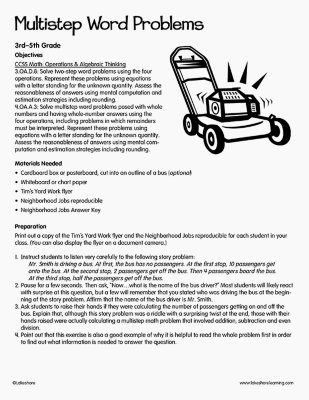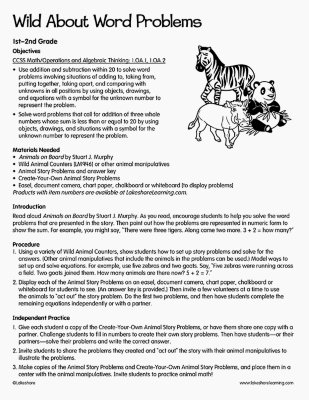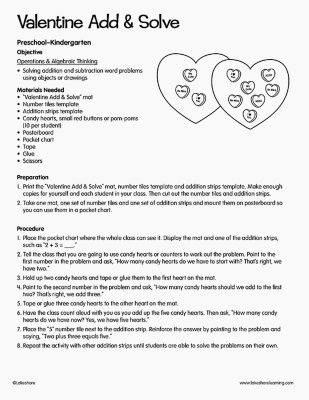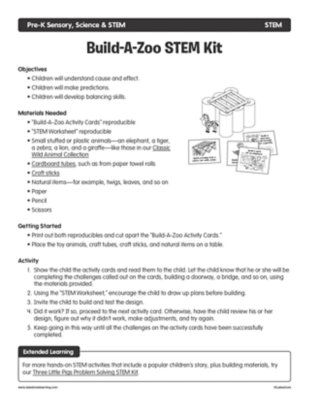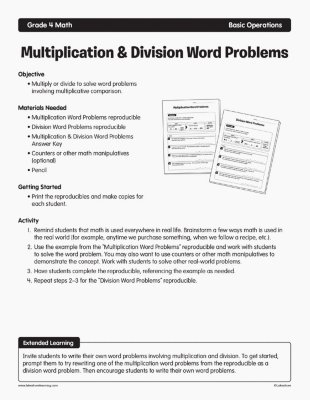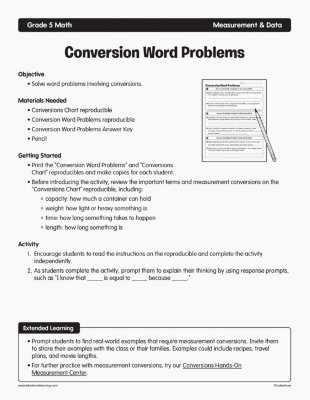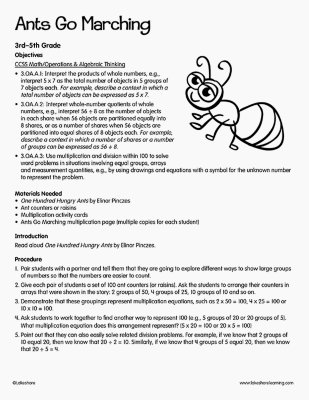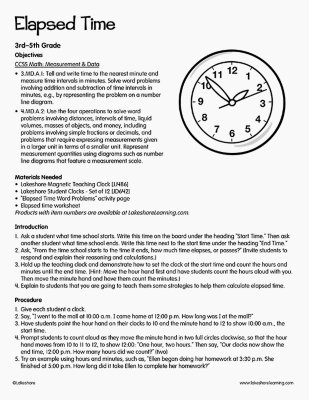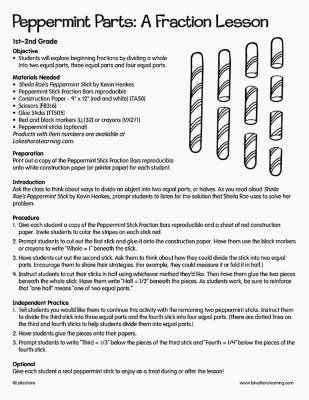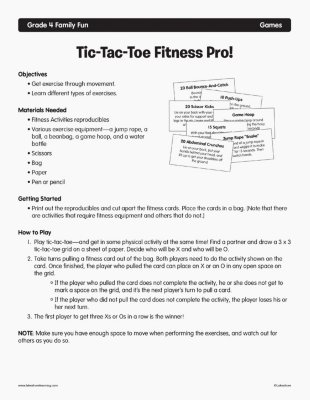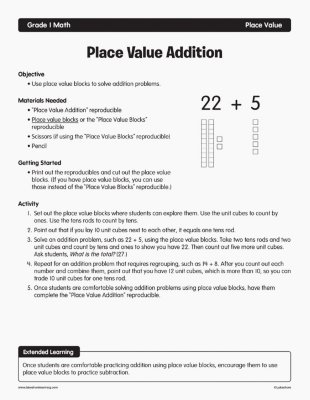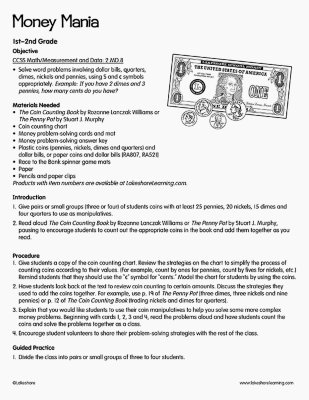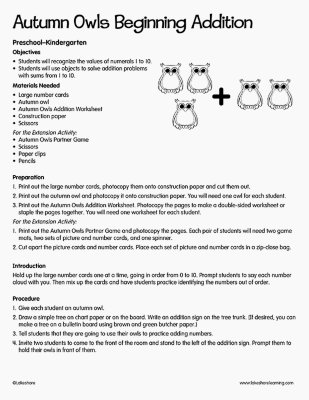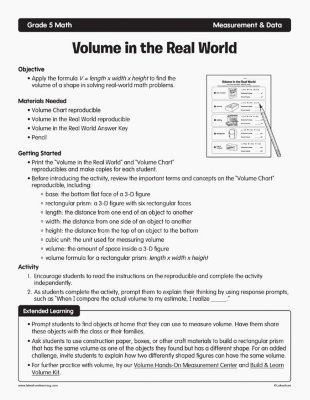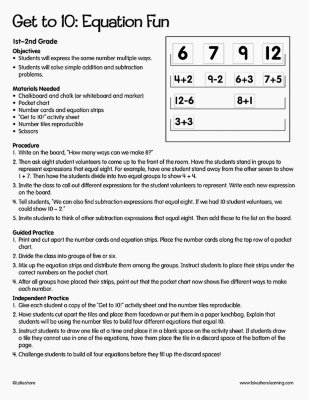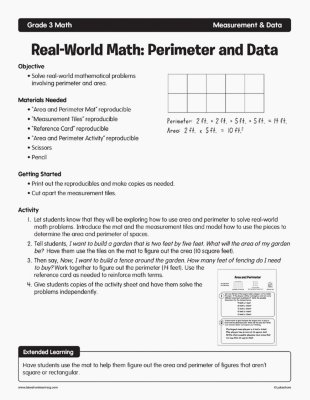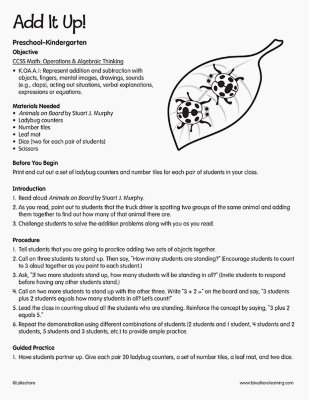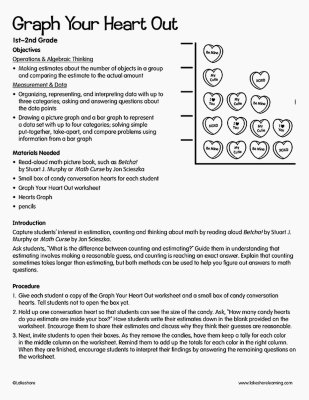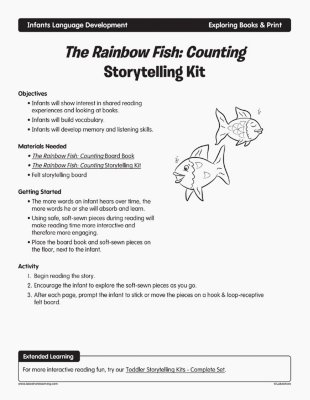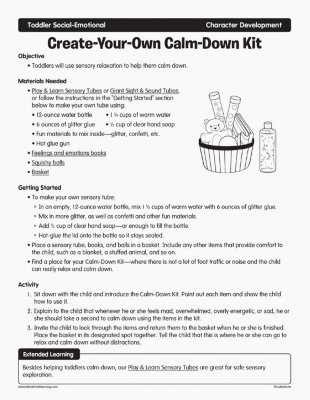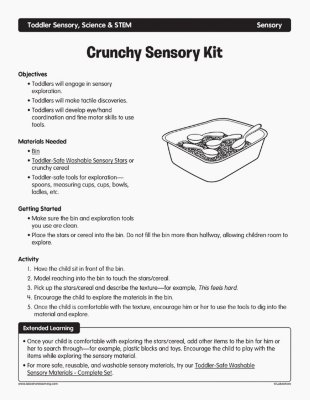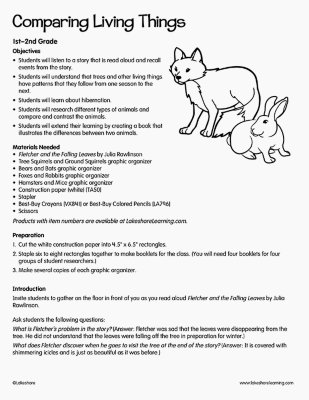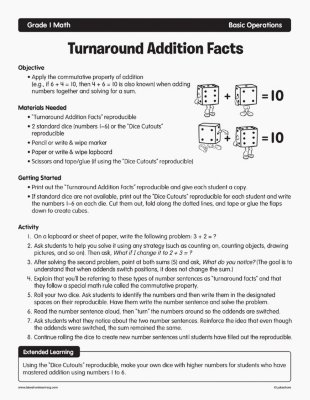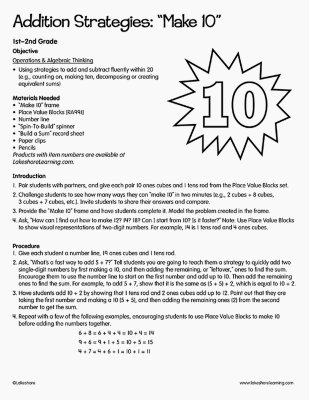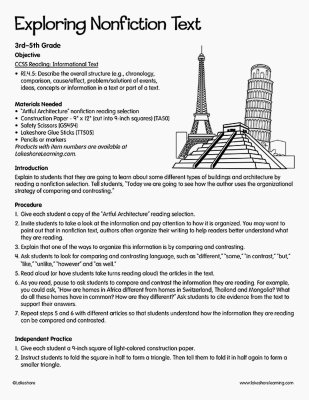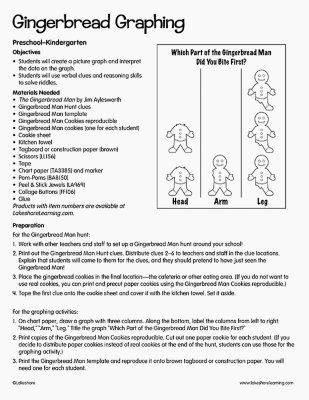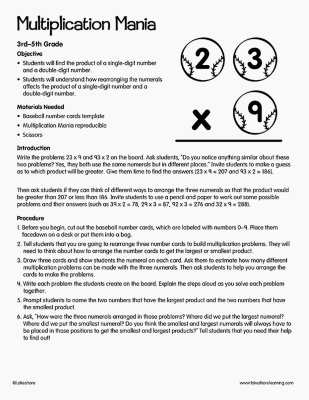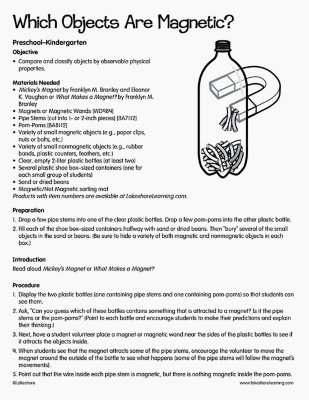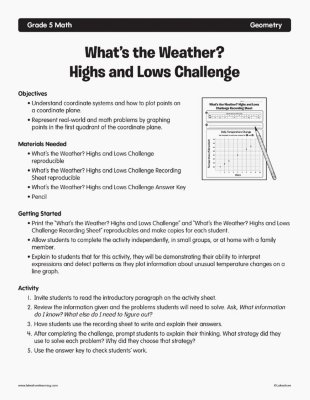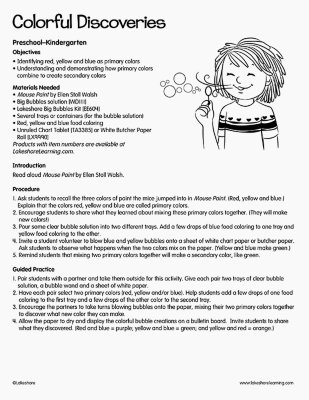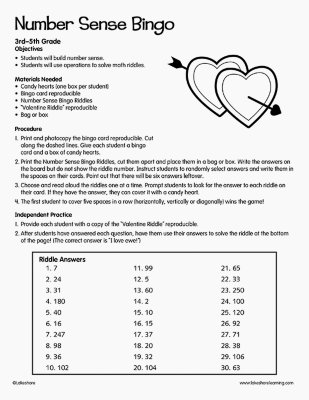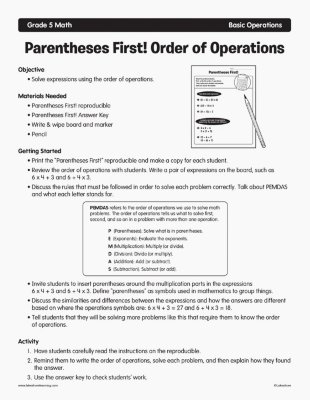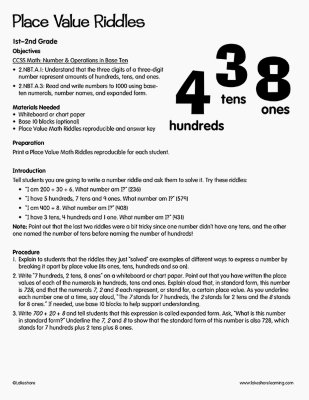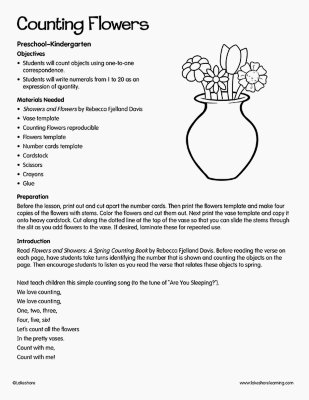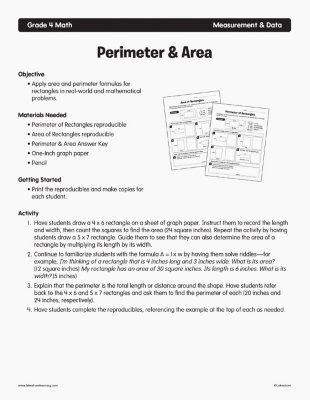Narrow by Grade
Grade
38 results for "problem solving stem kits"
Objectives
- Children will understand cause and effect.
- Children will make predictions.
- Children will develop balancing skills.
Objective
- Multiply or divide to solve word problems involving multiplicative comparison.
Objective
- Solve word problems involving conversions.
Objectives
- Work with variables and expressions.
- Understand how to solve simple problems.
- Write equations to solve word problems.
Objective
- Use place value blocks to solve addition problems.
Objective
- Apply the formula V = length x width x height to find the volume of a shape in solving real-world math problems.
Objectives Students will express the same number multiple ways. Students will solve simple addition and subtraction problems. Materials Needed Chalkboard and chalk (or whiteboard and marker) Pocket chart Number cards and equation strips “Get to 10!” activity sheet Number tiles reproducible Scissors
View Lesson PlanObjective
- Solve real-world mathematical problems involving perimeter and area.
Objectives
• Infants will show interest in shared reading experiences and looking at books.
• Infants will build vocabulary.
• Infants will develop memory and listening skills.
Objective
• Toddlers will use sensory relaxation to help them calm down.
View Lesson PlanObjectives
• Toddlers will engage in sensory exploration.
• Toddlers will make tactile discoveries.
• Toddlers will develop eye/hand coordination and fine motor skills to use tools.
Objective
- Apply the commutative property of addition (e.g., if 6 + 4 = 10, then 4 + 6 = 10 is also known) when adding numbers together and solving for a sum.
Objectives
- Understand coordinate systems and how to plot points on a coordinate plane.
- Represent real-world and math problems by graphing points in the first quadrant of the coordinate plane.
Objectives Identifying red, yellow and blue as primary colors Understanding and demonstrating how primary colors combine to create secondary colors Materials Needed Mouse Paint by Ellen Stoll Walsh Big Bubbles solution Lakeshore Big Bubbles Kit Several trays or containers (for the bubble solution) Red, yellow and blue food coloring Unruled Chart Tablet or White Butcher Paper Roll Introduction Read aloud Mouse Paint by Ellen Stoll Walsh.
View Lesson PlanObjectives Students will build number sense. Students will use operations to solve math riddles. Materials Needed Candy hearts (one box per student) Bingo card reproducible Number Sense Bingo Riddles “Valentine Riddle” reproducible Bag or box
View Lesson PlanObjective
- Solve expressions using the order of operations.
Objective
- Apply area and perimeter formulas for rectangles in real-world and mathematical problems.
